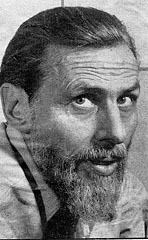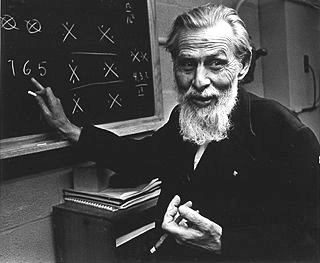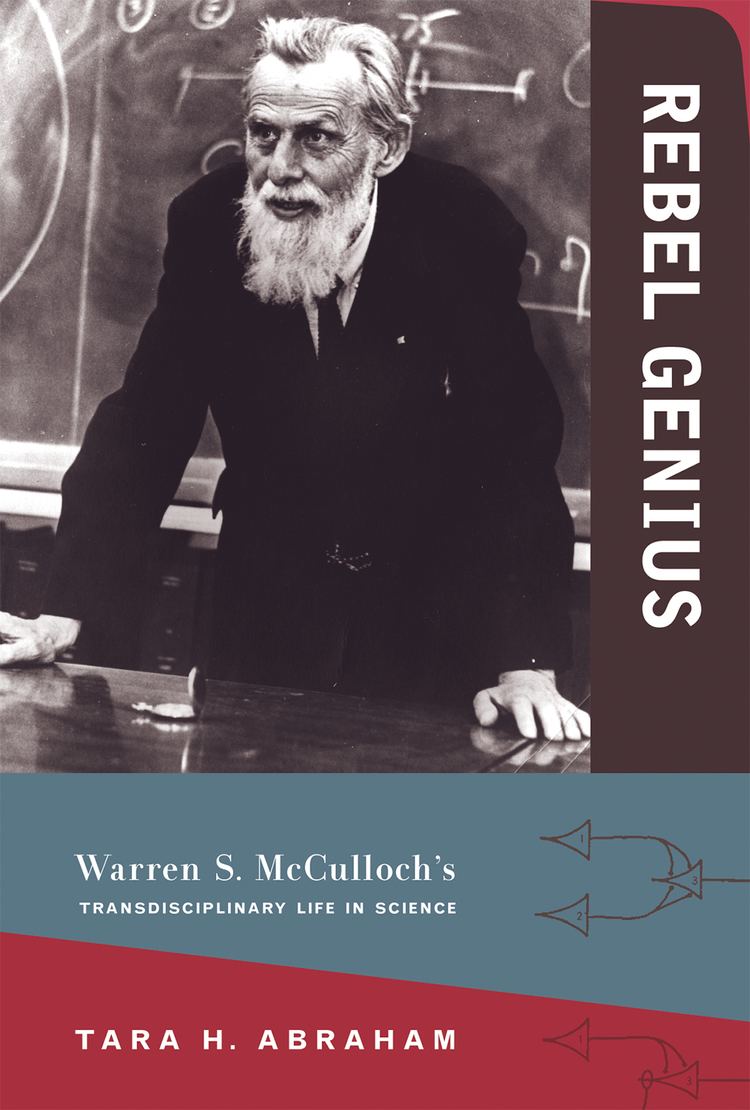Name Warren McCulloch | ||
 | ||
Books Embodiments of mind, Collected Works of Warren S. McCulloch Education | ||
Warren Sturgis McCulloch
Warren Sturgis McCulloch (November 16, 1898 – September 24, 1969) was an American neurophysiologist and cybernetician, known for his work on the foundation for certain brain theories and his contribution to the cybernetics movement. Along with Walter Pitts, McCulloch created computational models based on mathematical algorithms called threshold logic which split the inquiry into two distinct approaches, one approach focused on biological processes in the brain and the other focused on the application of neural networks to artificial intelligence.
Contents
- Warren Sturgis McCulloch
- How to pronounce Warren Sturgis McCulloch American EnglishUS PronounceNamescom
- Biography
- Work
- Neural network modelling
- Reticular formation
- Publications
- References

How to pronounce Warren Sturgis McCulloch (American English/US) - PronounceNames.com
Biography

Warren Sturgis McCulloch was born in Orange, New Jersey, in 1898. He attended Haverford College and studied philosophy and psychology at Yale University, where he received an A.B. degree in 1921. He continued to study psychology at Columbia and received a M.A. degree in 1923. Receiving his MD in 1927 from the Columbia University College of Physicians and Surgeons in New York, he undertook an internship at Bellevue Hospital, New York, before returning to academia in 1934. He worked at the Laboratory for Neurophysiology at Yale University from 1934 to 1941, before moving to the Department of Psychiatry at the University of Illinois at Chicago.

From 1952 he worked at the Massachusetts Institute of Technology in Cambridge, Massachusetts with Norbert Wiener. He also worked at Yale University and later at the University of Chicago. He was a founding member of the American Society for Cybernetics and its second president during 1967–1968. He was a mentor to the British operations research pioneer Stafford Beer.

McCulloch had a range of interests and talents. In addition to his scientific contributions he wrote poetry (sonnets), and he designed and engineered buildings and a dam at his farm in Old Lyme, Connecticut.
He died in Cambridge in 1969.
Work
He is remembered for his work with Joannes Gregorius Dusser de Barenne from Yale and later with Walter Pitts from the University of Chicago. Here he provided the foundation for certain brain theories in a number of classic papers, including "A Logical Calculus of the Ideas Immanent in Nervous Activity" (1943) and "How We Know Universals: The Perception of Auditory and Visual Forms" (1947), both published in the Bulletin of Mathematical Biophysics. The former is "widely credited with being a seminal contribution to neural network theory, the theory of automata, the theory of computation, and cybernetics".
Neural network modelling
In the 1943 paper they attempted to demonstrate that a Turing machine program could be implemented in a finite network of formal neurons (in the event, the Turing Machine contains their model of the brain, but the converse is not true), that the neuron was the base logic unit of the brain. In the 1947 paper they offered approaches to designing "nervous nets" to recognize visual inputs despite changes in orientation or size.
From 1952 he worked at the Research Laboratory of Electronics at MIT, working primarily on neural network modelling. His team examined the visual system of the frog in consideration of McCulloch's 1947 paper, discovering that the eye provides the brain with information that is already, to a degree, organized and interpreted, instead of simply transmitting an image.
Reticular formation
McCulloch also posited the concept of "poker chip" reticular formations as to how the brain deals with contradictory information in a democratic, somatotopical neural network. His principle of "Redundancy of Potential Command" was developed by von Foerster and Pask in their study of self-organization and by Pask in his Conversation Theory and Interactions of Actors Theory.
Publications
McCulloch wrote a book and several articles:
Articles, a selection:
Papers published by the Chicago Literary Club:
